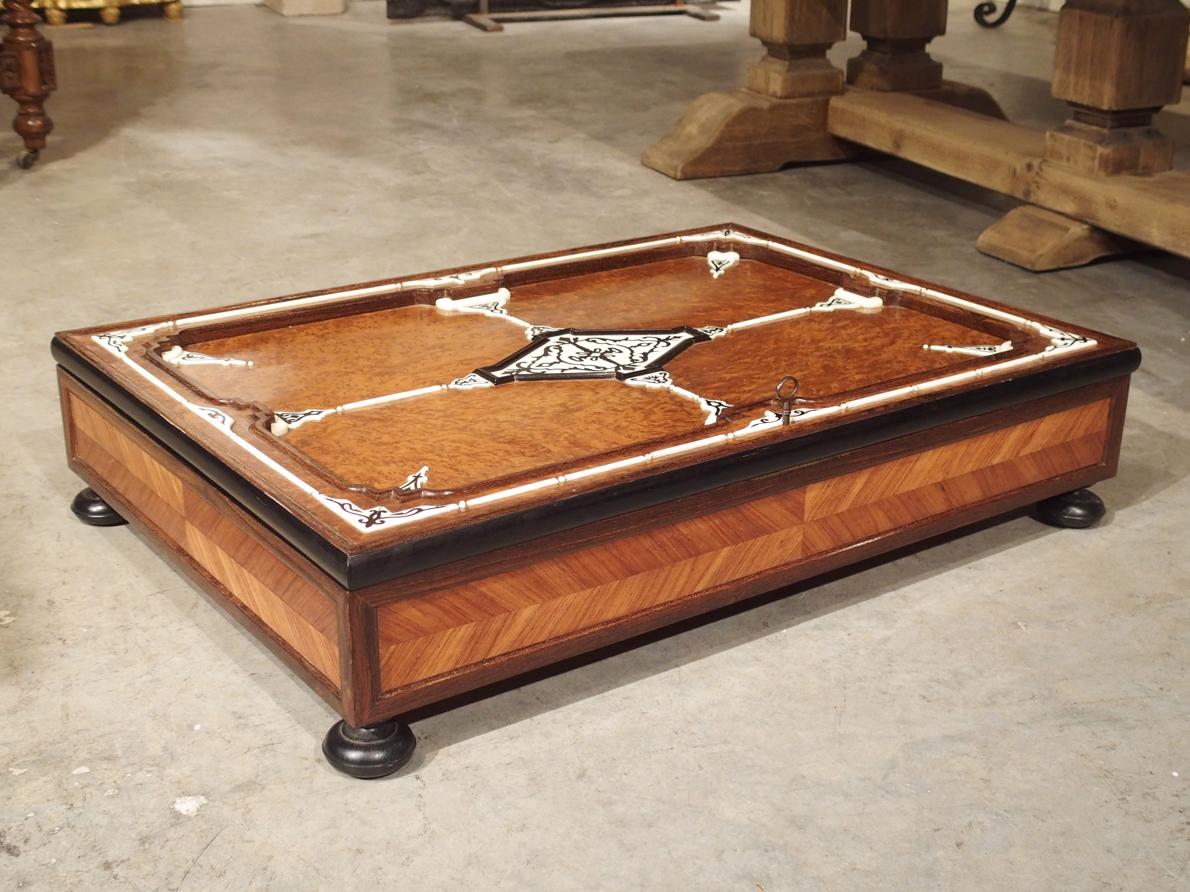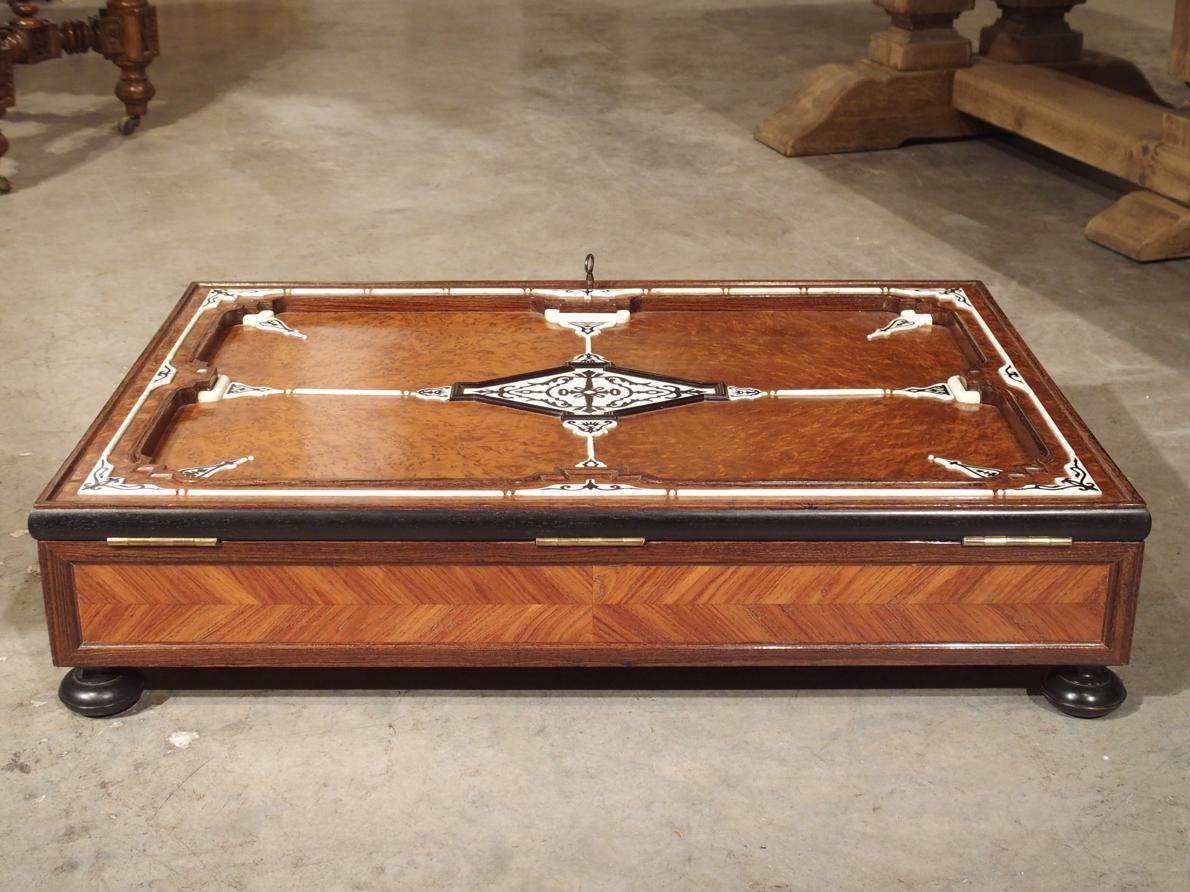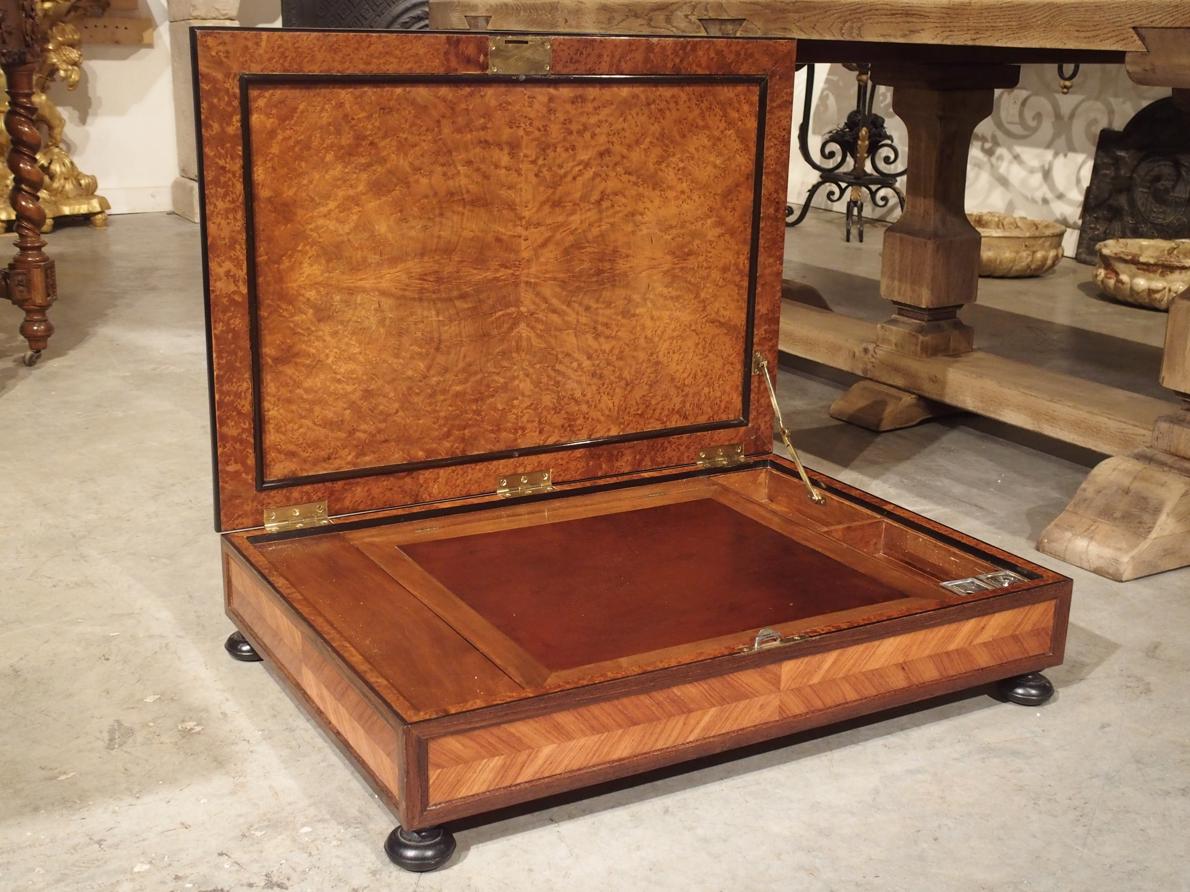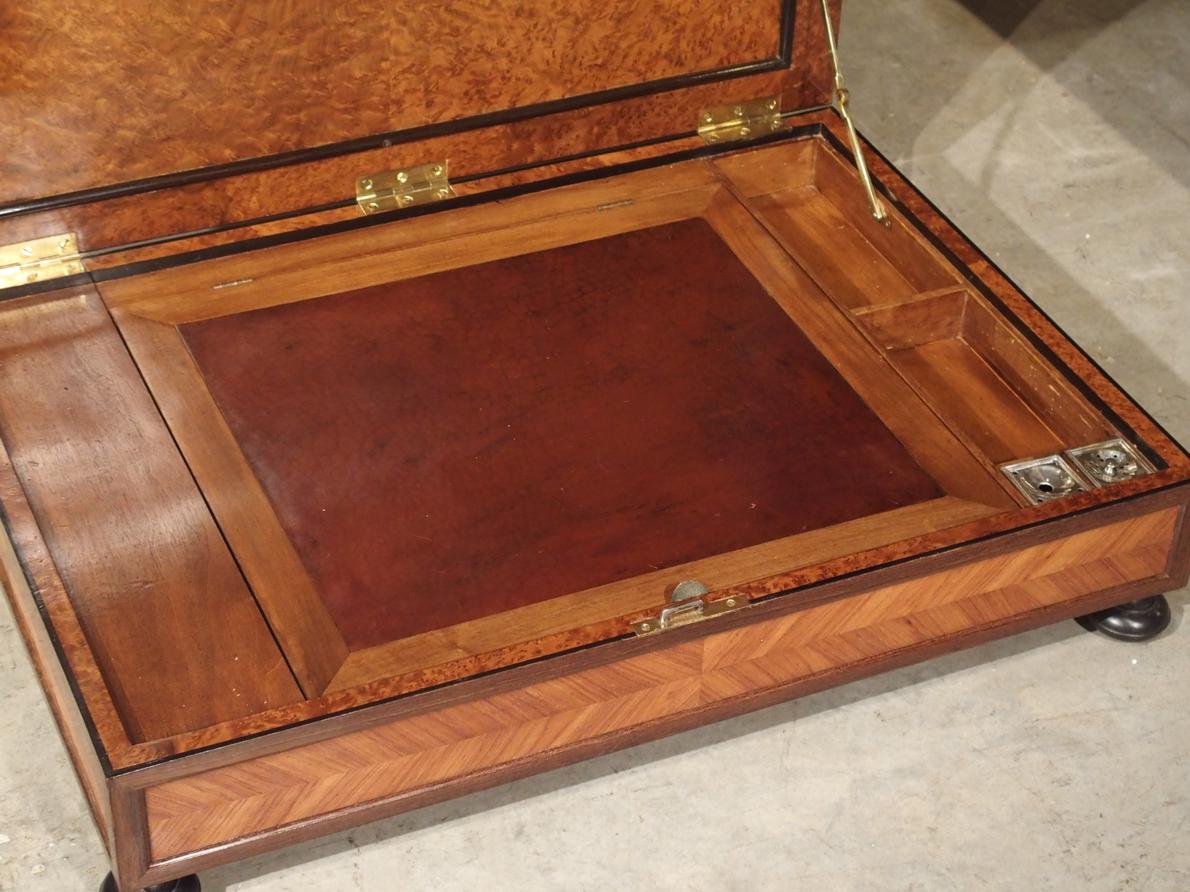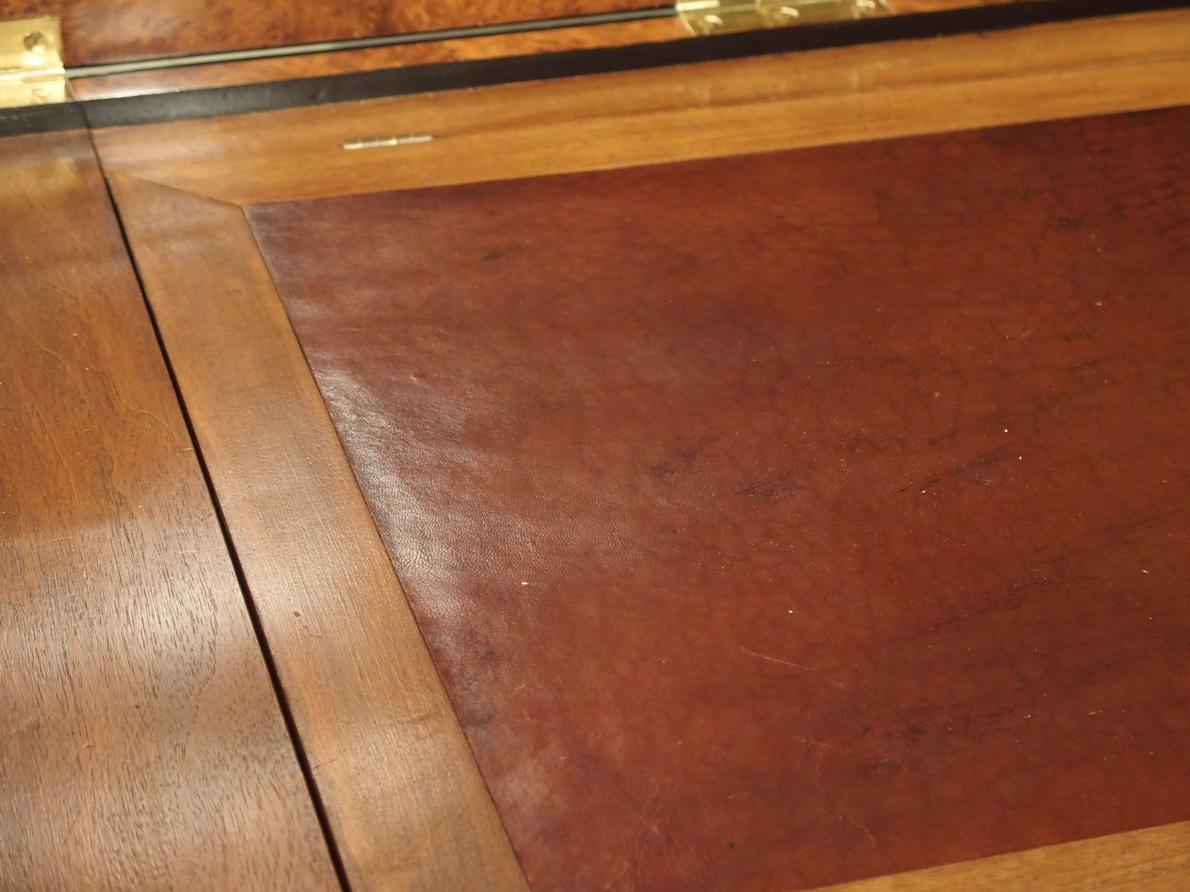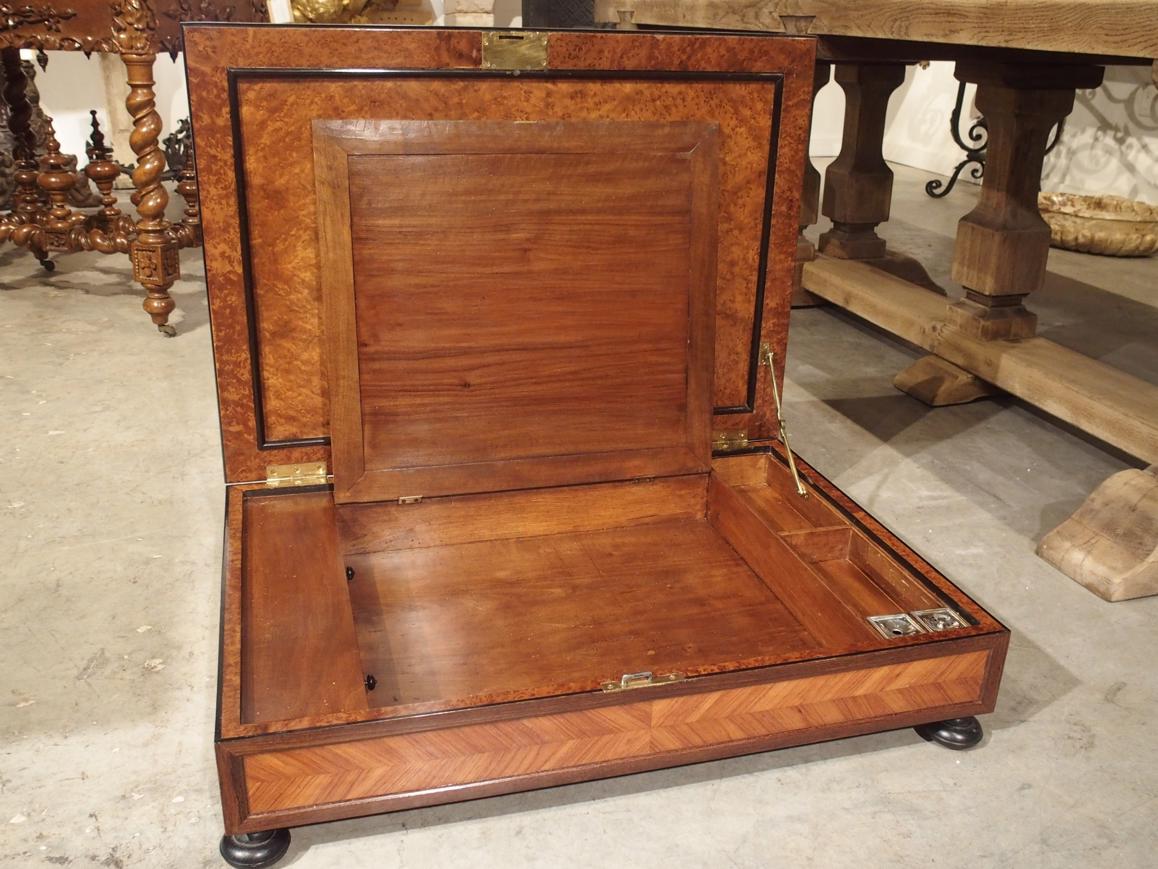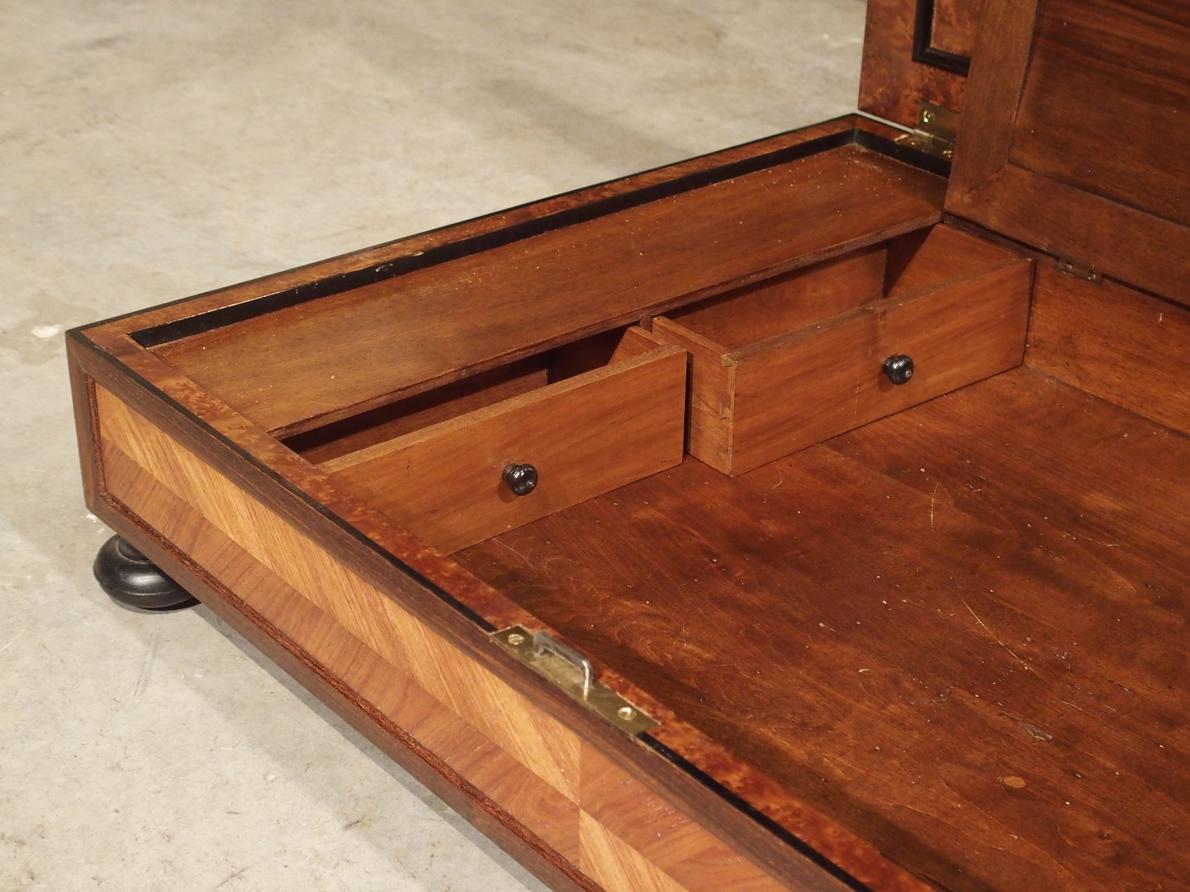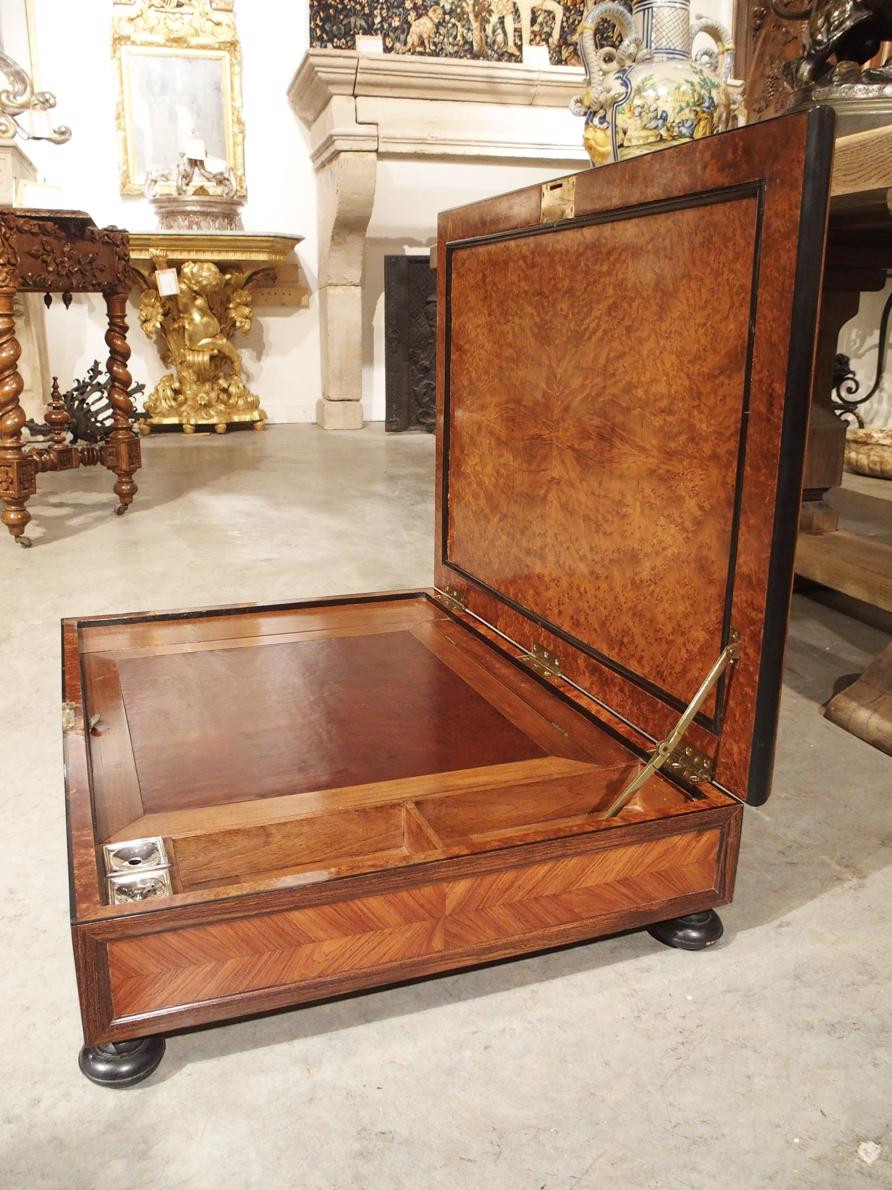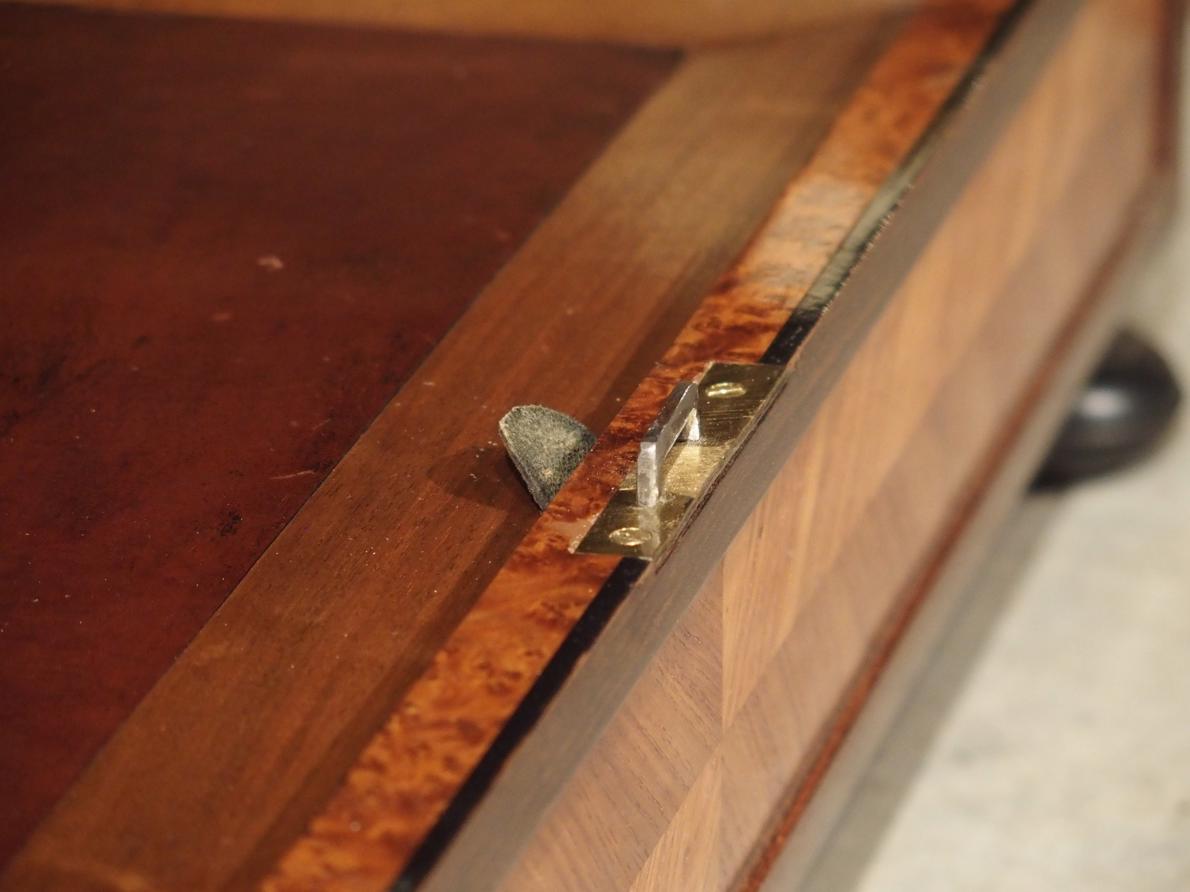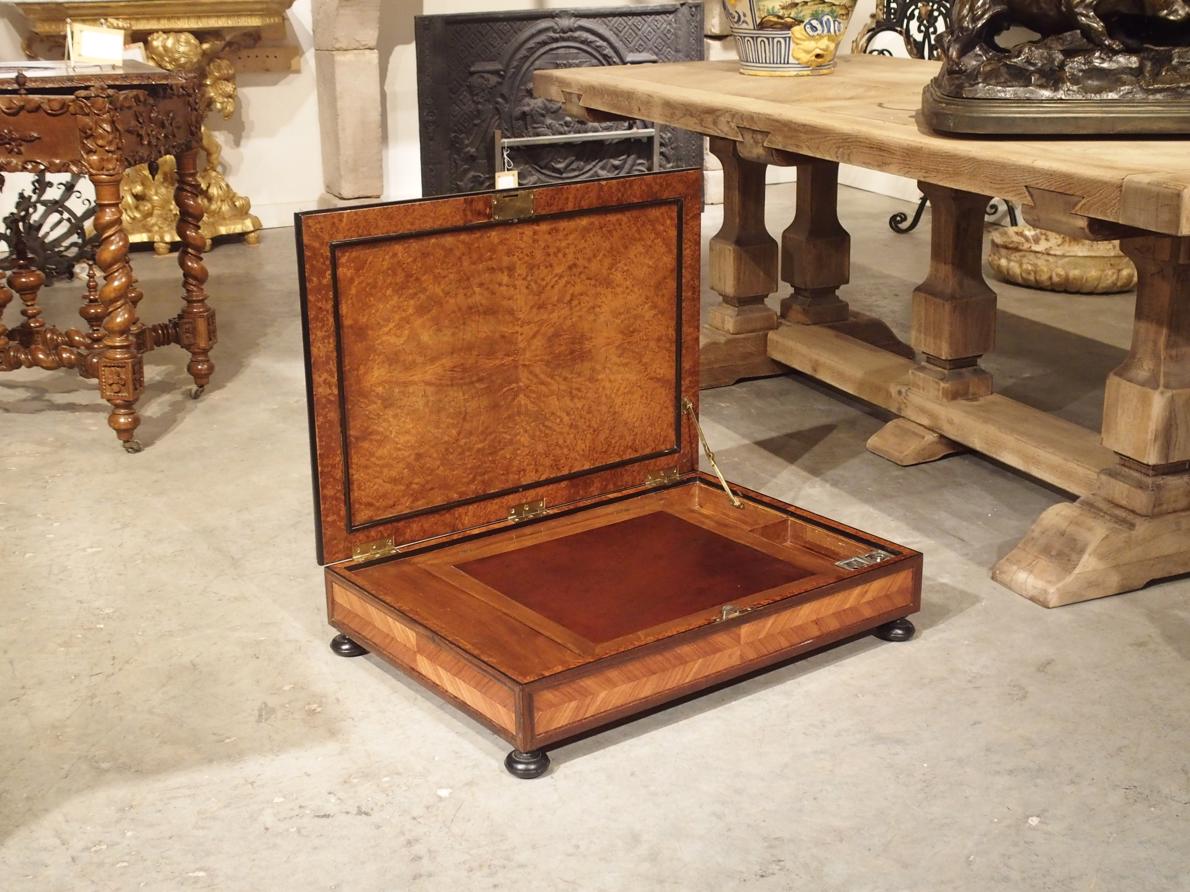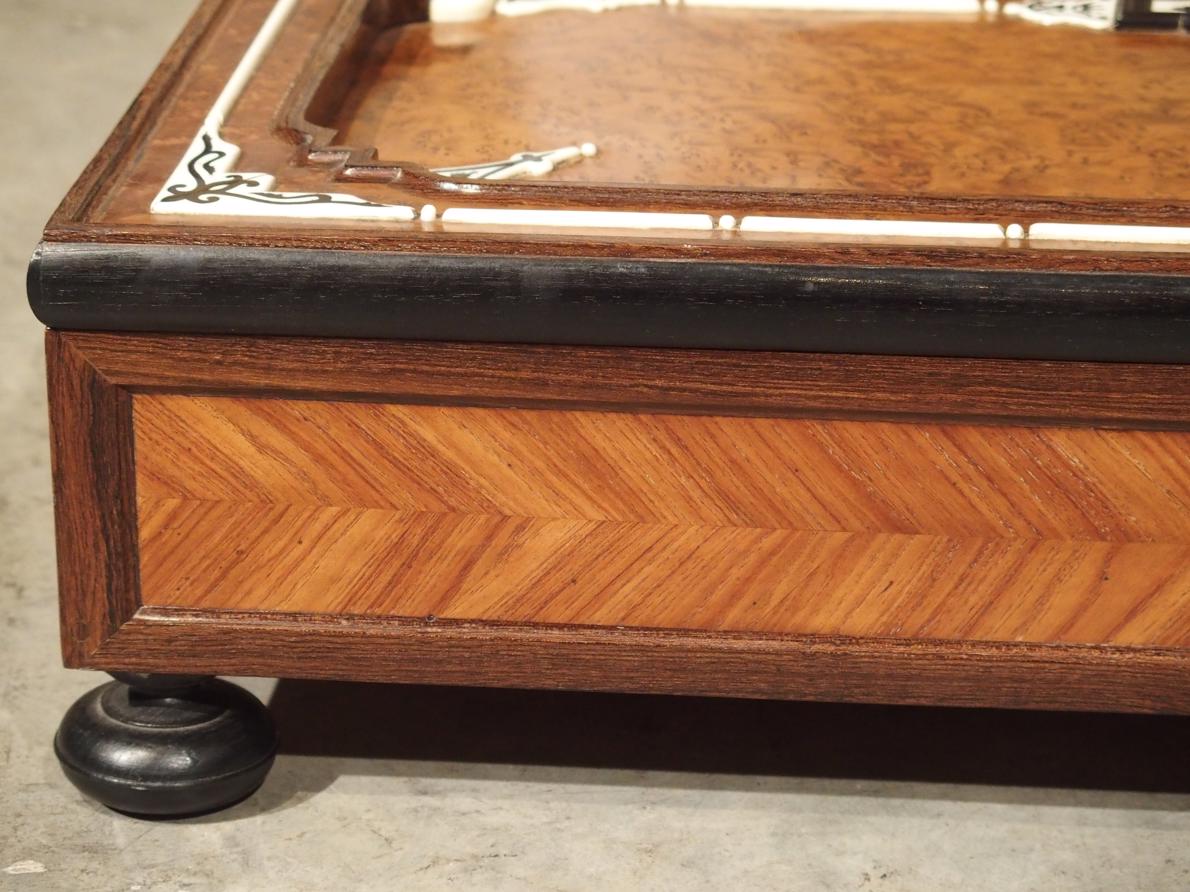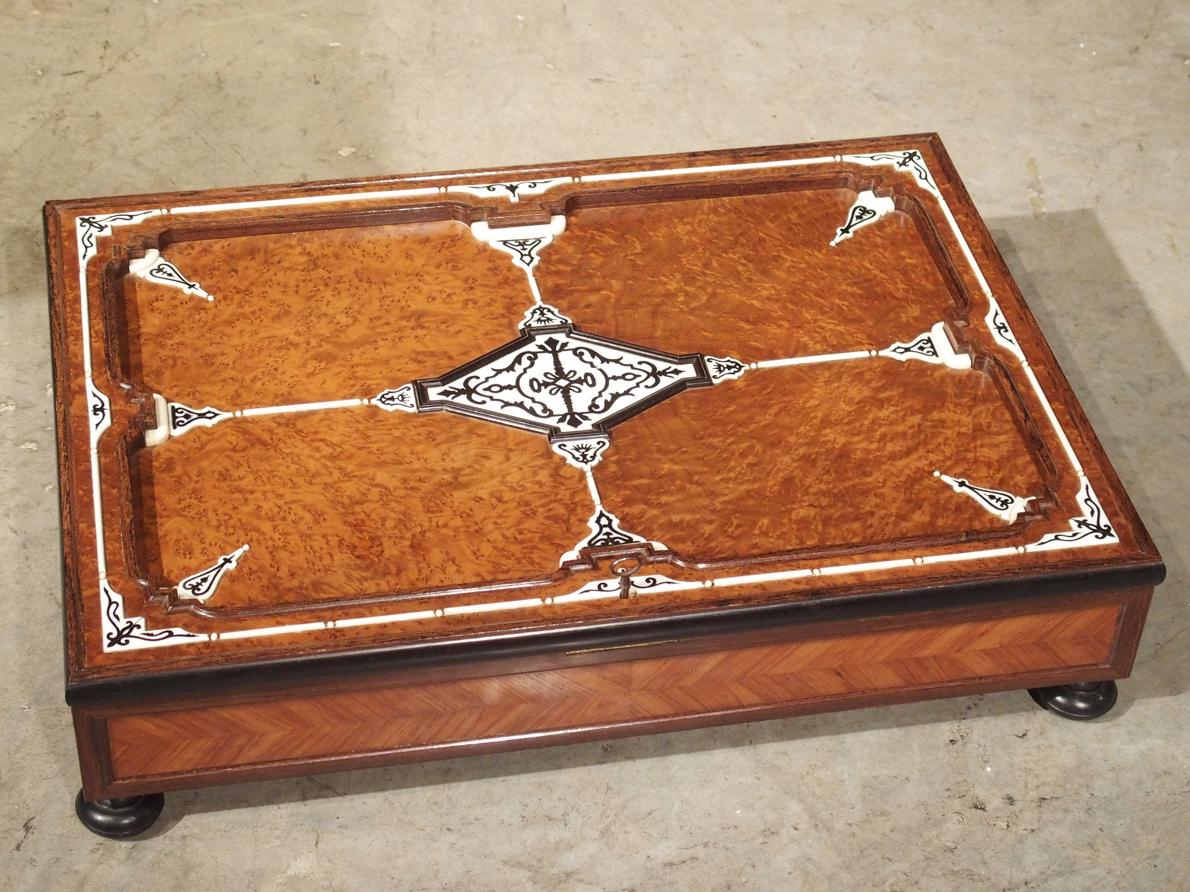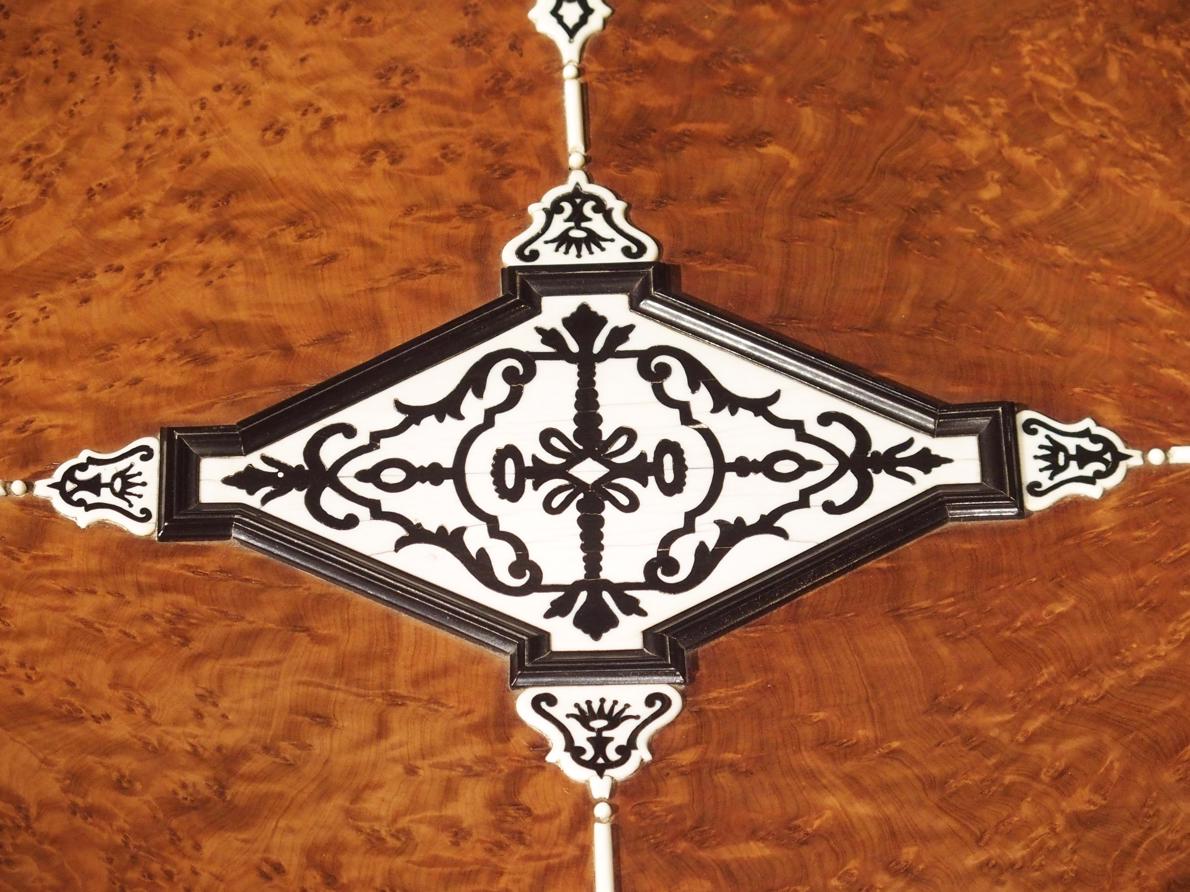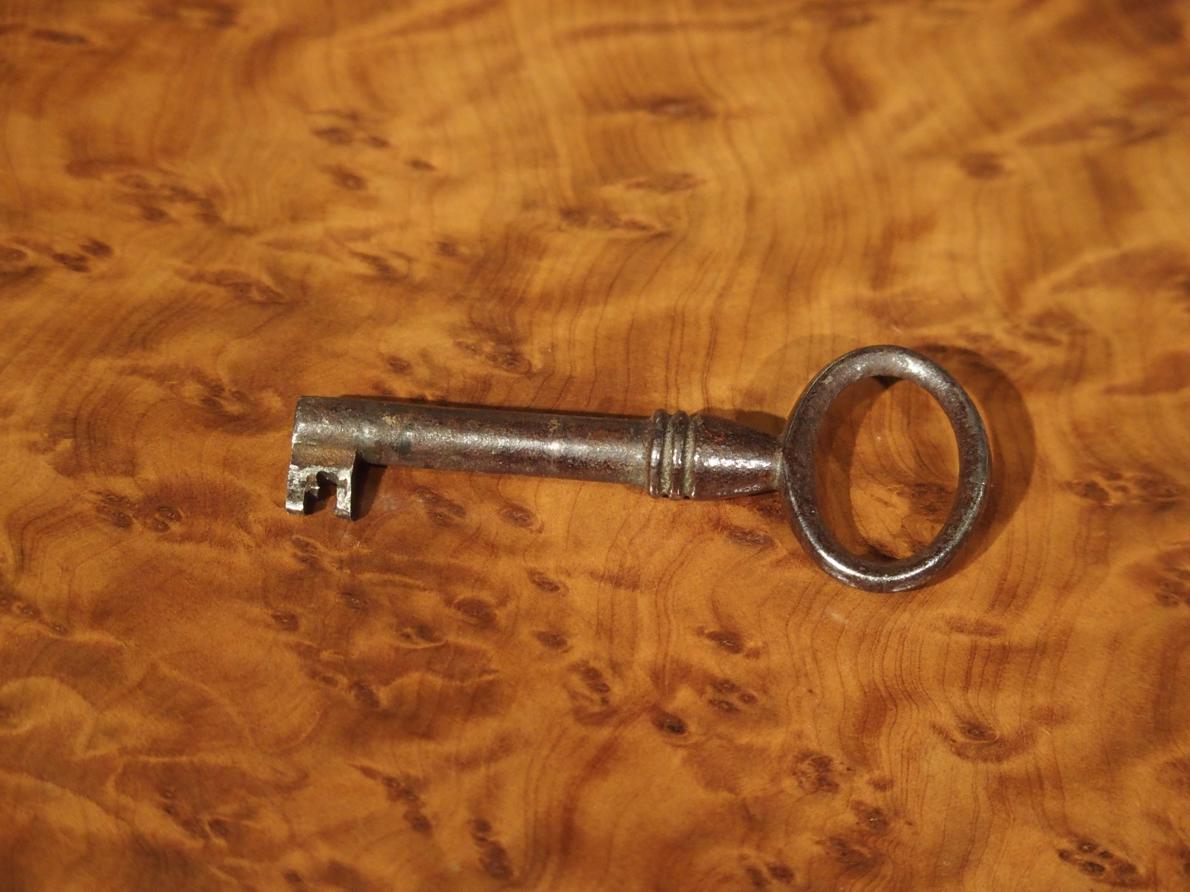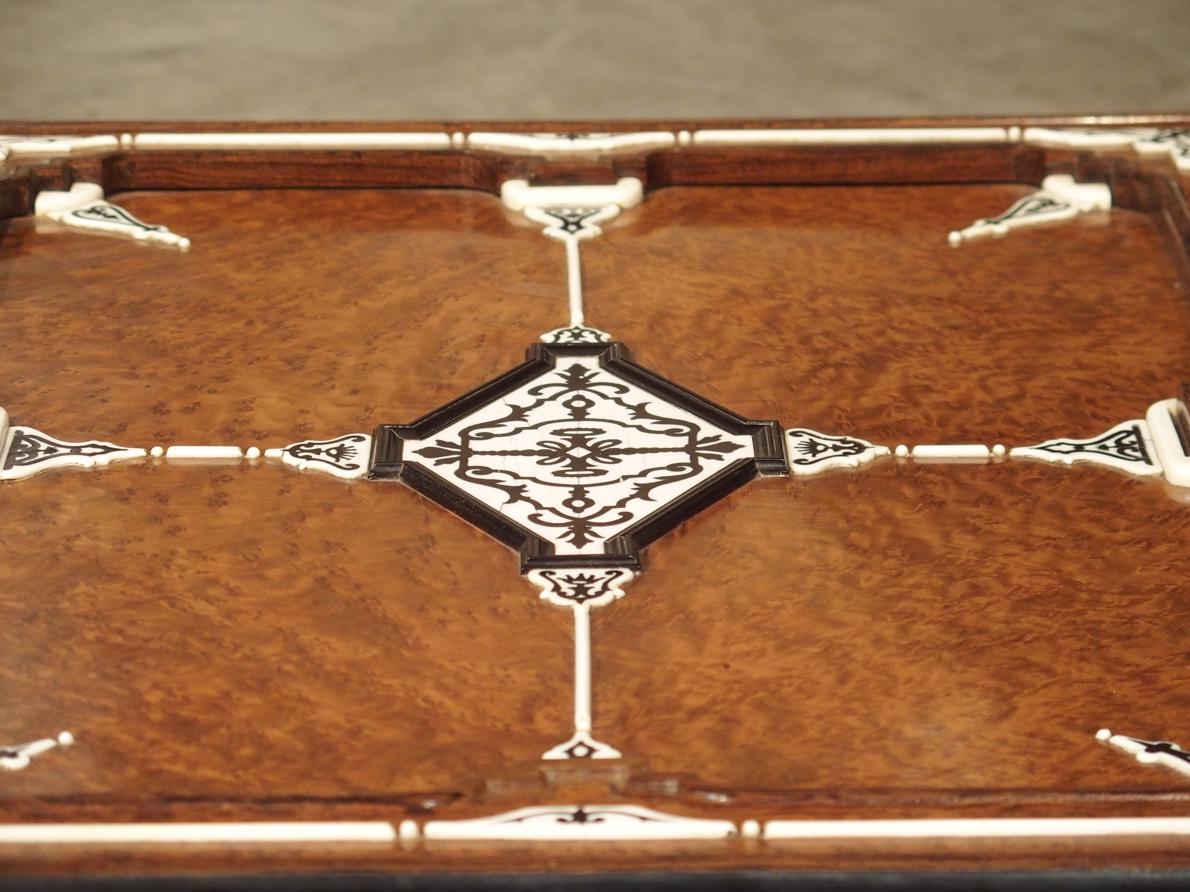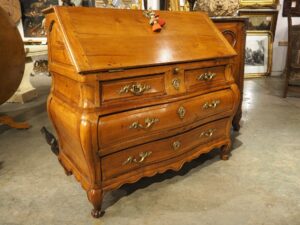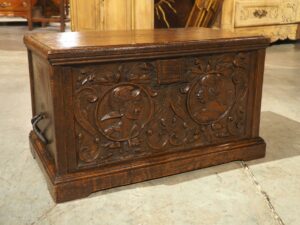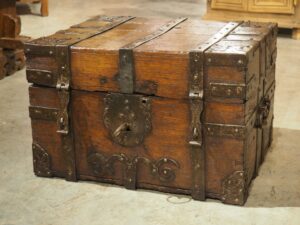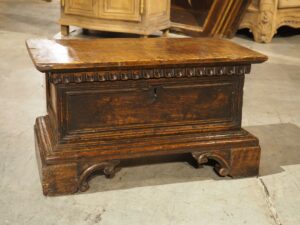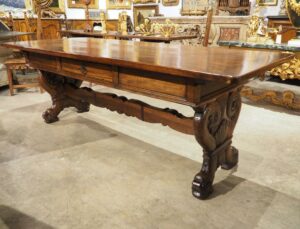This large and stylish 19th century French ecritoire is made of a beautiful burl elm veneer and ebonized wood with an intricate applique design to the top.
An ecritoire is typically a small, portable desk with interior compartments to hold writing materials, such as pens and ink. While in use, the ecritoire would be placed on the writer’s lap. There is a slanted hinged face, that when opened, forms the writing surface. As you can see, this version is larger than a standard ecritoire and does not have a slanted face. Ours was most likely originally part of a “cabinet d’apparat”, which is a large desk that served as an ornate showpiece. It could have been carried around to different rooms or residences to write up documents, drafts, or letters.
The true beauty of this desk lies in the top face, or lid. All four sides of the lid are comprised of ebonized wood trim. There is an interior border that is formed by applique white and black bead and spindle motifs. The corners and the medial positions are more intricately worked designs such as crowns, fleur de lys and scrolling foliage. In the recessed interior of the lid, there are several more pieces of applique with black inlay. In the epicenter of the lid is the focal point: a large rhombus piece with even more inlay. The motifs of the center include C scrolls and arabesque flowers.
Once the lid has been opened via it’s original brass hinge, there are two compartments on the right side. Beneath the lower compartment, there are two slots for inkwells – which are included. The metal wells are capped with silvered lids. One of the lids is perforated, which would have held the pounce or sand (pounce pot). This would have permitted the writer to sprinkle the sand on the paper before inking to aid in the drying process. Excess pounce was often poured back into the container. In the middle of the opened desk, there is a large compartment with a burgundy leather writing surface. Underneath the leather top, there are two secret drawers, which are accessible only after lifting the small leather pull.
The hinges, the lock plate and the lid stay are all made of brass. The sides of the desk are parquet veneer in a chevron pattern. Underneath, there are four bun feet made of ebonized wood.
This ecritoire desk is the largest example we have seen, and it would have been commissioned in the 1820’s or 1830’s. It would look fantastic in an library or home office setting and still maintains its functionality.
Dimensions when open: H – 27 1/2, W – 31, D – 22 3/4.
CONDITION: Very good antique condition with some minor old worming holes to interior. Working lock and key.


